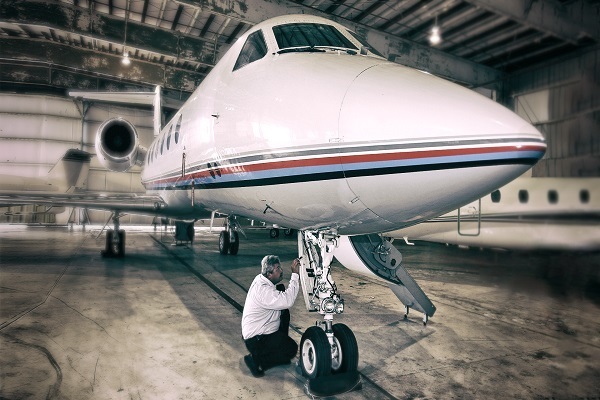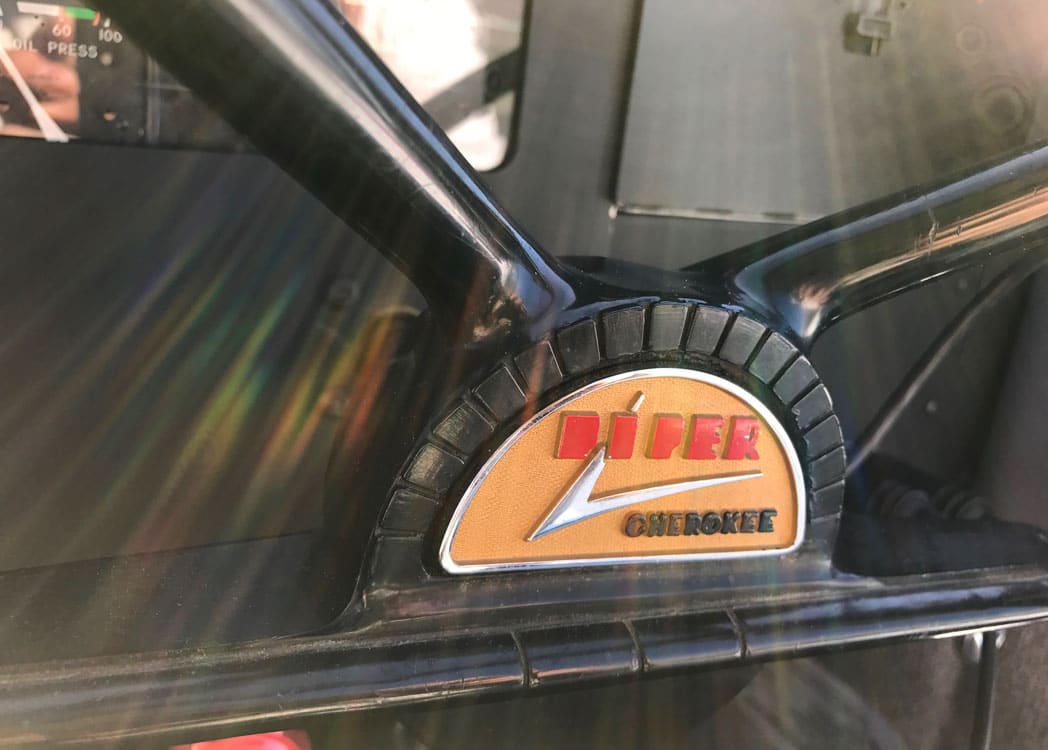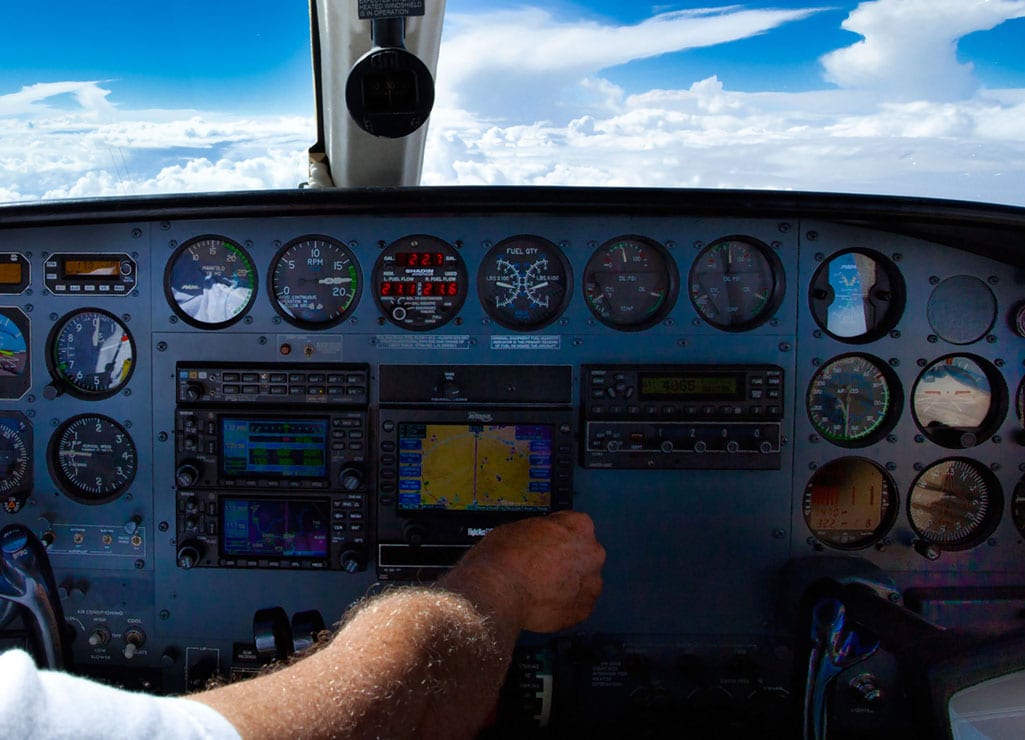The Ins and Outs of Dealing With an FAA Ramp Check
Your pilot license or an entire career can potentially be on the line during an FAA ramp check. What you say and do is important, but for the majority of pilots, you have nothing to fear. Pilots have to deal with the FAA in a variety of scheduled situations, so it’s the element of surprise which is the variable here. While I don’t think I look especially suspicious, I have been ramp checked by the FAA while operating Part 91, 135 and 121. It always happens when I’m in a hurry, fighting weather at the other end, or when I’m in a new pilot seat. What I learned from all three inspections is that being respectful goes a long way, and that as the PIC, you should (will) always know more about your airplane than the inspector. So don’t be afraid to show them what you know.
My first Part 91 ramp check occurred in Duluth, MN. I was volunteering for the Red Cross and I was in the process of loading several boxes of blood into the back of a Beechcraft Debonair. As I loaded the first box, I spotted a man holding a clipboard and wearing khaki pants, sport coat and a tie, which I recognized as the cliché of an FAA Air Safety Inspector (ASI). He was talking to another pilot when I first saw him, but I imagine he started drooling and warming up his red pen when he saw me loading mysterious cargo across the ramp. I knew he was eventually going to come over and it only took me a few moments of panic to get ready for his visit. Remind yourself to be courteous and be ready to answer the simple interview basics of Who, What, Where, and How. The overview is just like your private pilot checkride questions:
1. Who are you?
Pilot Documents – airmen and medical certificates. The ASI wants to know you are healthy and not under the influence of anything, and that you are current and qualified to fly the airplane you’re about to get into. But don’t forget that the inspector also has to prove to you who they are and provide their credentials. Write down their name and badge number.
2. What are you flying?
Aircraft Documents – A.R.R.O.W. Airworthiness, Registration, Radio License (you are no longer required to present a radio license unless flying internationally, but post 9/11, they’ll want photo ID), Registration, Operating Limitations, Weight and Balance. AFM. They’ll check that your N-number and serial numbers match airworthiness. Weight and Balance, including a list of equipment. Aircraft logbooks. You do NOT need your pilot logbook, but if you’re a student or sport pilot, you’ll need evidence of endorsements, and they can ask you to follow up by presenting your logbooks. When was your Biennial Flight Review?
3. Where are you going?
The ASI might ask to see pertinent and current aeronautical charts. If IFR, they might ask what type of operations you’ll conduct (ILS, DME, RNAV, GPS, RNP) and then follow up by determining if the required radio and navigation equipment is installed for the specific operations conducted.
4. How’s your equipment?
The ASI cannot board your aircraft without permission, and you don’t have to give it to them, but why not? You should value your life enough to stand by your equipment. They are allowed to inspect the aircraft and look in the windows starting with basics like seatbelts and seats. They will determine the general airworthiness by inspecting items for damage or deficiencies that would affect the safety of your flight. They can also ask when the last VOR check was completed, determine if ELT is installed and check the expiration date of the battery. And they can inspect all required placards and aircraft inspection plates.
Most of my flying for the Red Cross at this point had been into remote airports. They often were without facilities and always without another soul to check on me, but the return flight was always into STP. Whether or not someone was there to check on me, I value my life, so I always made sure my airplane and I were safe. But it’s easy to slide on the paperwork when no one is around. Ironically, because I was flying into an airport that was a little bit busier, I had everything ready that day (I had actually filled out a weight and balance!) So when he walked up to me and said, “Hi! I’m Joe and I’d like to talk to you about your flight today,” I held my head high and said, “Gladly, ask away!”
I was carrying time sensitive blood platelets that needed to be at a processing plant near the STP airport, so I had a legitimate reason to tell the gentleman he could not delay my flight. And they aren’t authorized to delay you for any length of time anyways, unless there is an imminent danger. The ASI I was speaking to was polite, enthusiastic and had never seen a Debonair (early Bonanza). We talked about flying for the Red Cross and I asked him about his own flying. He explained how he loved aviation, but had been grounded due to a medical denial. He was an advocate for aviation, wanted to keep pilots in the air, and his intentions were good. He wanted to be a part of the aviation community and this was a great way for him to do it. We shook hands and went on our separate ways, no paper slip of any color in hand. We both knew he could’ve nailed me on missing ties down straps in the cargo area, but he didn’t.
Part 135 ramp checks are a little different in that the ASI must be given free and uninterrupted access to the pilot compartment. They can even ask to ride along for an enroute inspection. (This is very rare, but it can still be done. I’d be on the phone with the chief pilot and an attorney before they unexpectedly got on a flight.) You are defending yourself and your company procedures. My Part 135 ramp check only lasted about fifteen minutes. I was flying an old Falcon 20, and while doing a quick-turn fueling in BNA, an FAA gentleman nabbed me at the FBO front desk while I was paying for fuel. I had been the copilot on the FAA proving runs for Part 135 certification of this aircraft, so when he showed me his credentials, I showed him mine. I also told him I had been the copilot on the proving runs and to go ahead and ask me anything about this airplane. He walked out to the airplane with me and admitted he’d never been inside a Falcon 20. At that moment, I knew I was going to win this game. I didn’t offer up any extra information. I made him ask me for it, but I was gracious and gladly showed him inside and answered every question he asked. He sat in one of the passenger seats, asked a few friendly questions, and went on his way.
My Part 121 ramp check was a little different. I was a new captain on a Boeing 727-200, and we were a newly certified airline so the FAA was keeping a close eye on us. The inspector that boarded my airplane at 0600 in MSP had an agenda, and fully intended to find something, anything, which might be wrong. That’s easy. Every airplane, especially Boeing 727s, have their own personality. Maybe it takes a tap of the finger to get a gauge to wake up or an extra cycle of a switch to turn something on, but it’s working in its own way. There is always something not quite right. But as a pilot, it is easily dealt with, so we let it go. From an inspector’s point of view, they can always find something not quite right, so it’s the attitude of the crew that will make the difference.
On this particular morning, I didn’t have a single MEL. Yet after going through all the basics of an FAA ramp check, the ASI decided he didn’t like the fact that the mechanics had color coded a few of the circuit breakers. Our creative mechanics had simply put a colored collar around the circuit breakers on the items on the hot bus bar, so they could pull those items off the bus while working on the airplane. Simple. This ASI said he was grounding the airplane. It was so absurd, it was comical. But the dialog racing through my head about the intelligence of this FAA representative was probably not going to be helpful. I consciously took a deep breath, dug into my positive attitude and began to play his game while the 173 passengers I had onboard waited. I believed that this inspector didn’t really intend to ground the airplane, but he wanted to see how the crew and company handled it.
He told me I had to prove to him this was an authorized operation. I handed him our FAA approved Operations Specifications and showed him a picture of our circuit breaker panel with the colored collars. The picture was in reference to something else, but it was a picture in a manual approved by the FAA. No, it didn’t say anything specific about the collars. It was something the mechanics did to ease a process, but now it was the FAA’s turn to prove how this affected the safety of our flight. He tried to tell me the circuit breakers were altered. I countered that their function and operations were unchanged, which means unaltered. It was simply cosmetic, for identification, and did not affect function.
Aviation has many shades of grey that can go either way, black or white, depending on your perspective. As a pilot, the color on a circuit breaker did not affect the safety or operation of this airplane. As an examiner, it was not standard and he had a right to question it. The FAA’s presence and the fear of a violation keep us all safe, whether we like it or not. Aviation needs checks and balances to avoid complacency. During the entire process, my crew and I kept a smile on our faces and were respectful, and my crew were helpful with every request. And I secretly enjoyed the challenge. I knew I wasn’t entirely wrong and he wasn’t entirely right. A few more phone calls back and forth and the examiner said we were released. That was the end of it.
“Give me adversity so that I may be tested,” is one of my dad’s favorite sayings. This is the attitude you need to bring with you every day in aviation, especially when the FAA wants to make your day. I know many pilots who would argue with this idea. They would push and resist and do everything in their right to keep the FAA out of their cockpit. But all that will do is prolong the process and raise doubt as to why they are resisting. With that said, it’s still important to remember that if they do find a violation, anything you say or do will be used against you. A ramp check is an FAA process, not a law enforcement action, but you’ll have a long road ahead of you if an enforcement action is taken against you. With the economy recovering and more money coming into the FAA coffers, the elusive ramp check might just be on your agenda when you least expect it. So just fly like you expect it.















Good piece. Nice to to see a piece on this spanning the perspective spanning Part 91, 135, and 121.
But aircraft logbooks on a ramp check? I disagree this is a valid request.
Most all aircraft operated under part 91 do not have their logbooks on-board. Sure, the ASI could ask for the the aircraft logbooks, but you would not be under any expectation to be able to offer them up immediately. They should be tucked away securely back at the hangar.
Hey if I’ve got this wrong, please take a moment and point me to the correct information.
It’s a nit, but an important one. I really like the post otherwise. More pilots should be prepared to make ramp checks a non-event.
I’ll check with Erika about that. Stay tuned….
Rod, you are absolutely correct! However, if you are at your home airport (especially if you are at the FBO where you are renting an airplane), they might ask for the aircraft logbooks. You should not keep aircraft logbooks on board, but if you are in the vicinity of where you just reviewed them before taking the airplane, there is always a chance they’ll ask since they assume you checked them before agreeing to take aircraft…
I disagree with the “why not” attitude of letting an official look inside your airplane. Their job is NOT to keep you safe, their job is specifically to seek out rule breakers. You can have complete trust in your equipment, but there are also tons of rules for all sorts of things and there is no reason you should subject yourself to a fine or worse because you had forgot something or didn’t do something properly.
Also, while this guy’s “Good Guy Inspector” thing might be genuine, it’s a common interrogation tactic to relate to the other person. I have seen it for myself countless times “oh yeah I understand you don’t have to answer my questions, I am actually a civil liberty advocate myself… but I am just trying to do my job here”. Oh, sorry that my rights are getting in the way of you doing your job.
I would encourage people who read this to review the AOPA’s ramp check procedure which is not as beautifully written as this piece is, but goes a lot further to make sure you keep flying without getting yourself into unnecessary trouble.
//www.aopa.org/Pilot-Resources/PIC-archive/FAA-Enforcement/Ramp-Checks
That’s interesting that the ASI can’t board your craft without permission. I guess there are important checks you have to be aware of. I have a flight that I’m going on this weekend and I’m glad the FAA has checks like this to maintain plane safety.